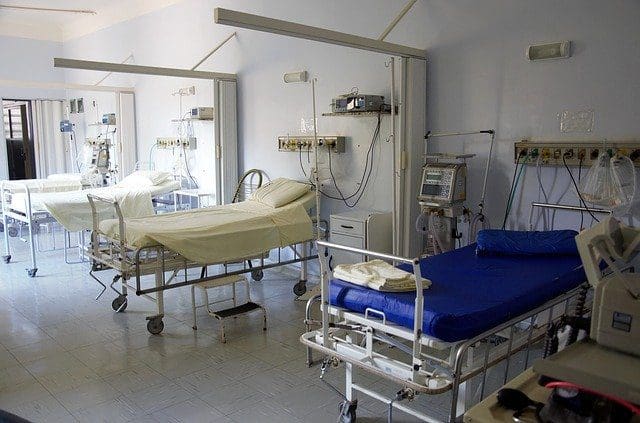The vast majority of Texas cities have yet to see the surge in Chinese coronavirus infections projected by health experts. Even in hot spots such as the Dallas area, where county officials have imposed the harshest restrictions on residents, patient volumes have dropped at many medical centers and emergency rooms.
An owner of several outpatient emergency clinics in Dallas spoke with Texas Scorecard about his record low patient volumes in March, along with other concerns about public health risks.
Dr. Robert Phelan, an emergency room physician, told Scorecard that patients who may otherwise seek medical attention for serious health concerns are afraid to leave their homes.
“We are at record low numbers because people are afraid they will get COVID-19. Appendicitis did not disappear overnight. A doctor cannot push on someone’s abdomen over a video conference and find a tender spot and bring this to the patient’s attention. Antibiotics are being prescribed over the phone, covering up the symptoms … this just delays the inevitable: a ruptured appendix.”
While health officials have encouraged residents who need medical attention to seek it, the data suggests that many non-coronavirus patients with health concerns are staying home out of fear of the virus.
“This could lead to unintended consequences … such as patients delaying serious diagnoses by using over-the-counter medication at home,” Phelan added.
In regards to coronavirus infections in Texas, not every urban area is seeing a surge in confirmed cases. In March, a local newspaper claimed hospitals in Tarrant County reported a decline in emergency room patients who exhibited coronavirus symptoms.
Through March 16, hospitals in the county reported 120 emergency room visits for symptomatic patients, making up 4 percent of ER visits. By March 20, that number was cut in half, with just 65 patients. Through the end of the month, the number never exceeded 90 patients, well below the previous high.
In Central Texas, St. David’s Healthcare has closed three stand-alone facilities, including two emergency rooms, due to a decline in patient demand. Hospital administrators say the drop is due in part to the prohibition on elective surgeries ordered by Gov. Greg Abbott, combined with not yet seeing the surge in coronavirus patients, as projected by health experts. The same report cited a reduction in ER visits in Bee Cave and Cedar Park.
It appears Texas now has more than ample capacity to handle a surge in hospitalizations. As reported by The Texan, the number of standard beds that are immediately available for coronavirus patients has increased from 8,155 on March 18 to 19,695 on April 2. Abbott listed other ways to increase that number by more than 50 percent.
Dr. Birx of President Trump’s coronavirus task force cited a hospitalization rate of 15 percent for those infected by the coronavirus. This means Texas presumably has the inpatient capacity today to handle 131,000 cases. As of the date of this article, the number of confirmed cases in Texas was only 7,045, with 133 deaths.
Tenet Healthcare, one of the largest health systems in the United States, recently furloughed 500 employees due to delays of elective surgeries and procedures and the resulting decline in patient volume and revenue.
Other news reports listed seven other major health systems across the nation, in addition to Tenet, that will be forced to take cost-reduction steps due to declining volume and revenue.
Put simply, if there is to be a surge, many hospitals in Texas and across the nation have yet to see it manifest.




